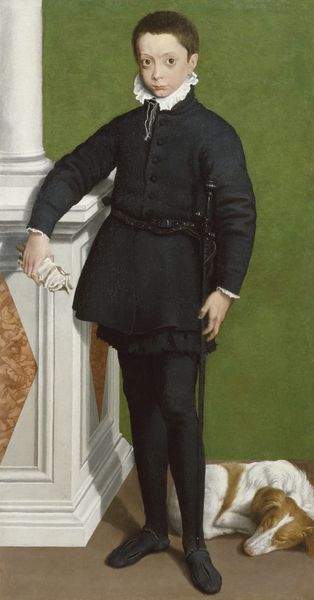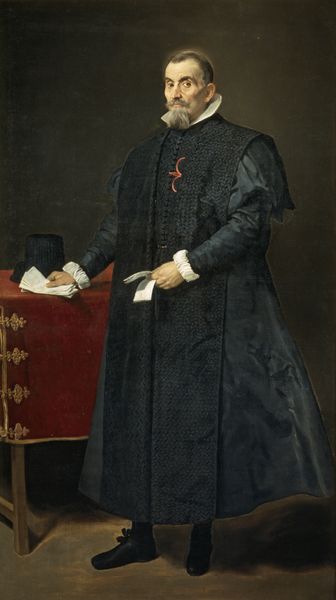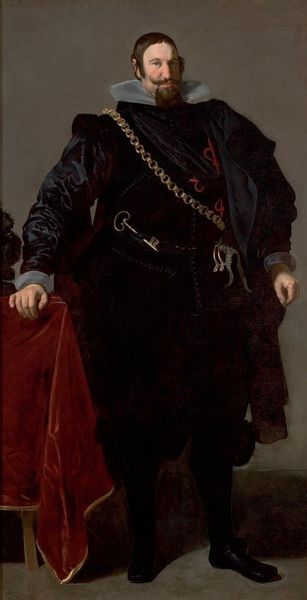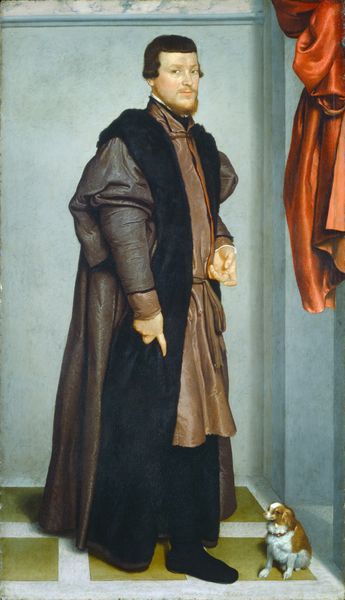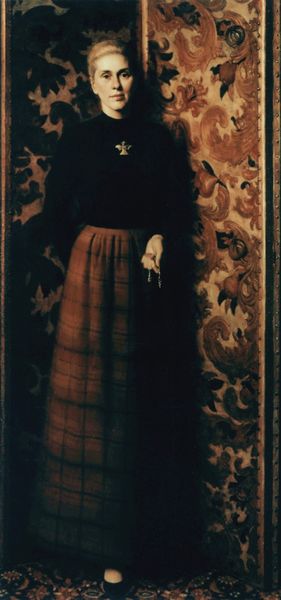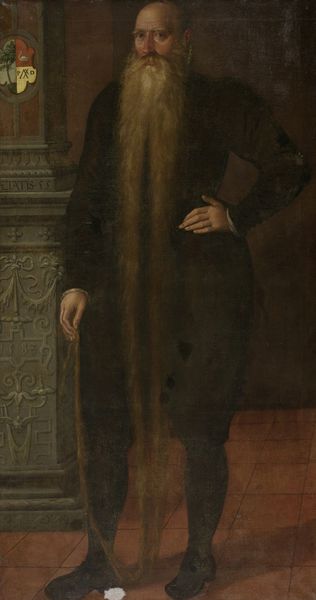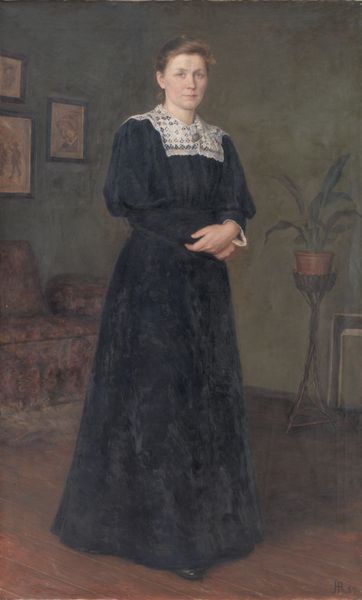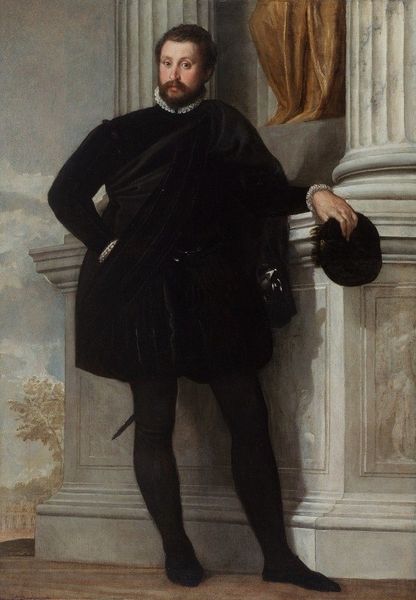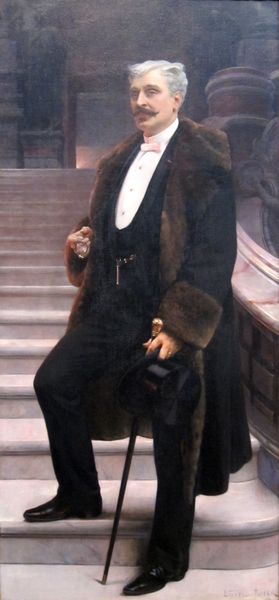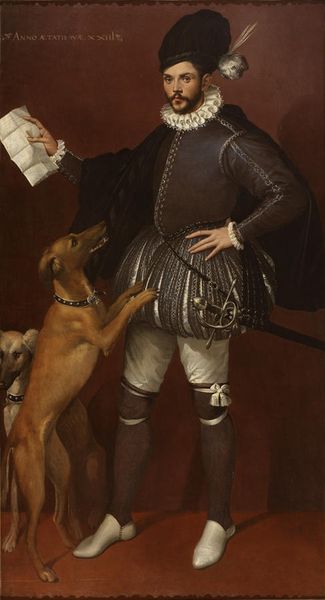
painting, oil-paint
#
portrait
#
high-renaissance
#
painting
#
oil-paint
#
figuration
#
11_renaissance
#
genre-painting
#
italian-renaissance
#
realism
Dimensions: 199.8 × 116 cm (78 5/8 × 45 5/8 in.)
Copyright: Public Domain
Curator: The somber palette here gives such gravity to the composition. The interplay of light on that velvet…stunning! Editor: Indeed. We’re looking at Giovanni Battista Moroni’s “Gian Lodovico Madruzzo,” painted sometime between 1551 and 1552. It currently resides at The Art Institute of Chicago. Look at how Moroni uses oil paint to capture both the textures of the textiles, but also to express wealth. Curator: Absolutely! The sheer volume of that black fabric speaks volumes. Consider the material—presumably velvet—and the labor required to produce it. The sitter, Madruzzo, clearly aims to project status, aligning with sumptuary laws and codes about permissible display in dress that marked Renaissance Italian society. It's a visual assertion of authority. Editor: A very clever analysis. From a formal perspective, notice how Moroni employs a restricted palette, dominated by the velvety black of Madruzzo's garments. This limited chromatic range serves to unify the composition and to draw attention to subtle variations in tone and texture, creating depth and interest despite the near absence of color. What’s most striking is how light reveals the subtle modulations within those fabrics. Curator: The details surrounding the subject are significant, as well. The dog, for instance, often read as symbolic, representing fidelity or loyalty. Beyond symbolism, however, I’m particularly curious about the artist’s production and distribution channels. I mean, how does an artwork like this circulate? Who commissions it? What types of labor does it employ and exploit to create? Editor: Well, undoubtedly commissioned by someone who valued realism; observe the almost photographic detail in the rendering of Madruzzo's features. Each plane of the face, and indeed every thread of his opulent clothes, are painstakingly observed and reproduced. I am intrigued by how he presents Madruzzo as resolute. Moroni’s strategic play with vertical and horizontal elements in the painting establishes a sturdy geometry for the human form. Curator: Thank you! I agree that Renaissance portraiture provided more than just representation. This work offers us a compelling snapshot into a culture, class structures, labor, and even production value during that historical period. Editor: Well said. Viewing art this closely helps us appreciate the artist’s technical achievements, the intricate play of form and structure, and also allows a look back at the art's philosophical underpinnings.
Comments
No comments
Be the first to comment and join the conversation on the ultimate creative platform.

